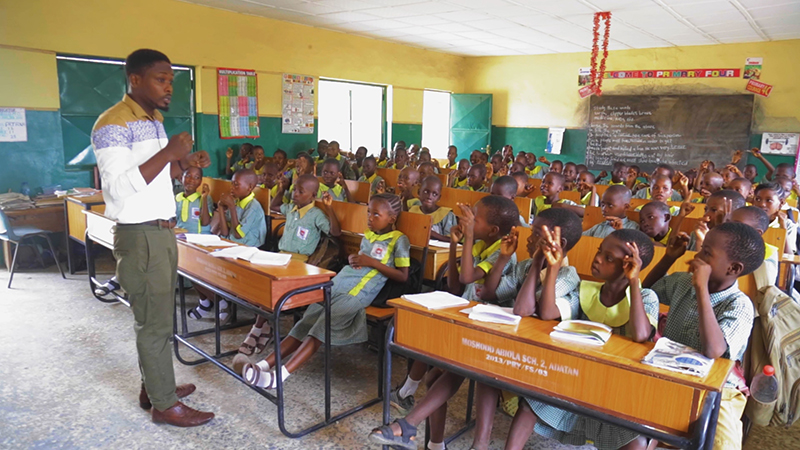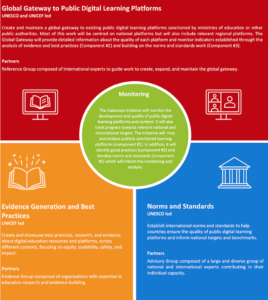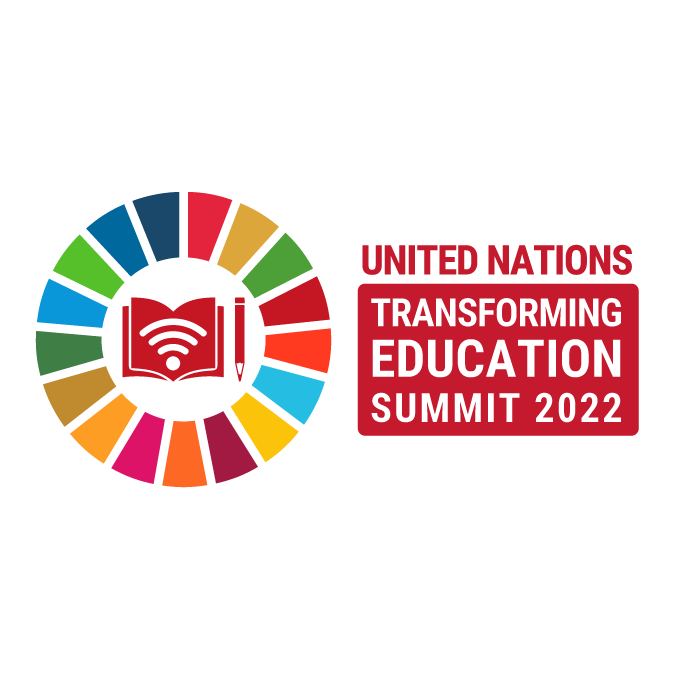Content: the forgotten key to digital education
As the digital marketing paradigm goes, “content is king”. But what about digital education? Is content the king in this case?
The last World Summit for Education Transformation set out three keys to unlocking the potential of digital learning. These three keys are connectivity, capacity and digital content.
However, although there are already strong efforts in this country and abroad, such as Giga and the Global Coalition for Education to move towards connectivity and capacity development, neither individual countries nor the international community seem to have realised the importance of open-access national education platforms with quality content (UNESCO & UNICEF, 2022).
Perhaps, due to this “oversight”, at this point in the 21st century and 20 years after the beginning of the Open Educational Resources (OER) movement, progress in creating and strengthening public digital learning platforms and content is still very uneven.
Many countries still do not have public digital platforms for education, and even when they do, the platforms and the learning content they host are often of very low quality.
Even more seriously, we are reversing the progress that was made in the construction and design of these platforms driven by the COVID-19 induced school closures. More than a third of national digital learning platforms built during the pandemic are no longer functioning or maintained (UNESCO & UNICEF, 2022).
Today, despite the increasing ubiquity of connected technology, digital learning platforms and public learning resources are either non-existent or difficult to find, difficult to navigate, lacking in quality and comprehensiveness, and inaccessible to a large number of learners and teachers.
However, in the words of Leonardo Garnier, Special Advisor to the UN Secretary-General for the World Education Summit, “connectivity and capacity are useless without adequate digital resources for teaching and learning”.
Connectivity and capacity are useless without adequate digital resources for teaching and learning.
The importance of digital learning platforms
The benefits of public and universally accessible digital learning platforms for education are countless. Among others:
- They offer attractive, quality content that benefits students, teachers and families, and complement and enrich school education.
- They can ensure continuity of learning and expand educational options for learners who are most vulnerable due to disability, geography, conflict, poverty, ethnicity, language, gender or other factors.
- They have a unique potential to provide learning opportunities for learners outside formal education systems, such as migrants and refugees.
- They can help teachers and families by facilitating more active, stimulating and collaborative ways of teaching and learning, both inside and outside the classroom.
Beyond these benefits, high-quality platforms ensure that there is a reliable and trusted gateway to public education on the Internet for connected learning that does not rely on advertising, data mining or monthly subscription fees.
More than a third of national digital learning platforms built during the pandemic are no longer functioning or maintained
Gateways to Public Digital Learning: objective and actions
The international community and individual countries must recognise the importance of digital technology and virtual learning environments as key elements of education. Just like physical schools and their resources, they deserve to be considered public goods and deserve care and attention.
To promote the creation and strengthening of these platforms, UNESCO and UNICEF are launching an international initiative on public digital learning. The initiative aims to map and analyse existing platforms and public content; help countries create and strengthen national platforms; identify and share best practices; and establish international norms and standards to guide the development of platforms in ways that advance national and international education goals.
The aim of the Gateways to Public Digital Learning initiative is to establish and technically support an international movement to ensure that all students, teachers and families can easily access, find and use high-quality, curriculum-aligned digital educational content to advance their learning. It will build on the experience of international, national and regional partners, many of whom already have experience in the field of e-learning.
The initiative will also help countries to meet the two commitments made in relation to content, the “forgotten key” of digital learning. What were these commitments?
- To iteratively establish and enhance public digital learning platforms with high-quality, curriculum-aligned educational resources, ensuring that they are free, open and accessible to all, in line with the UNESCO Recommendation on Open Educational Resources, while protecting users’ privacy, security and data protection.
- Empowerment and accessibility, especially for the most vulnerable. To ensure that these platforms empower teachers, learners and families, support accessibility and content sharing, and meet the diverse needs of users, including learners with disabilities, minority language speakers, girls and women, and people on the move.
To facilitate the realisation of these two commitments, the initiative aims to move forward in terms of three elements: the creation of a global portal, the generation of evidence and best practices, and the establishment of norms and standards. Let us look at each of them in a little more detail.
A portal of portals
The initiative aims to create and maintain a global portal of global digital learning platforms formally sanctioned or recommended by ministries of education or other public authorities. The portal, which will be created and maintained by UNESCO and UNICEF, will provide detailed descriptions of the different public digital learning platforms, including, for example, details on scope, content organisation, groups served, quality control processes, governance, funding, planned improvements and how they differ from other public digital learning platforms that might be used in a given country.
A test bed and best practices
This element is about creating and showcasing best practices, research and evidence on digital education resources and platforms, in different contexts, with a focus on equity, scalability, security and impact. Sharing sound research will support evidence-based decision-making and help ensure the impact of the Initiative.
Norms and standards to serve as a basis
Creating and maintaining digital platforms for education involves technical, legal, institutional and economic challenges involving national, regional and global actors. In this respect, both governments and schools will benefit from coherent visions of what public digital learning platforms should entail. This coherence will be fostered by establishing international norms and standards that act as benchmarks for the development and strengthening of digital platforms.
Digital educational content can be an invaluable weapon in the fight against the education divide. But, as we have seen, much remains to be done. Initiatives like this are a hopeful first step.
REFERENCES
UNESCO and UNICEF. 2022. Gateways to Public Digital Learning: A multi-partner initiative to create and strengthen inclusive digital learning platforms and content. United Nations Transforming Education Summit.







